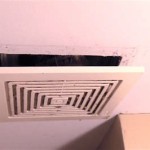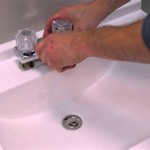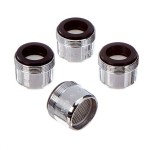Essential Aspects of Silicone Seal Bathroom Sink
A silicone seal is a critical component in bathroom sinks, providing a watertight barrier between the sink and the countertop. Maintaining an effective seal is essential to prevent leaks and damage to the surrounding area. However, choosing and applying silicone seal properly requires careful consideration. Here are some essential aspects to keep in mind:
Choosing the Right Silicone
Not all silicone sealants are created equal. Some are designed specifically for bathroom applications, while others may not be suitable due to their composition or performance characteristics. For bathroom sinks, it is recommended to use a 100% silicone sealant that is labeled "mold and mildew resistant." Avoid using sealants that contain solvents, as they can damage the sink surface.
Surface Preparation
Before applying the silicone seal, it is crucial to ensure that the surfaces are clean, dry, and free of debris. Any dirt, grease, or old sealant residue must be removed thoroughly. Use a cleaning solution and a scrub brush to clean the surfaces, then allow them to dry completely before applying the seal.
Application
When applying the silicone seal, it is important to use a steady hand and apply an even bead around the perimeter of the sink. Use a caulking gun to dispense the sealant and avoid over-applying. Tool the seal immediately after application using a damp finger or a specialized tool. This process helps to smooth the seal and remove any excess material.
Drying Time
Silicone sealants require time to cure and form a strong bond. Allow the seal to dry according to the manufacturer's instructions, which typically range from 24 to 48 hours. During this period, avoid using the sink or applying any stress to the seal.
Maintenance
Over time, even the best silicone seals can degrade due to exposure to moisture, cleaning agents, and other factors. To ensure the longevity of the seal, it is a good practice to inspect it regularly for any signs of cracks, gaps, or mold growth. If any damage is detected, the seal should be removed and replaced promptly.
By following these essential aspects, you can effectively seal your bathroom sink and prevent leaks, damage, and the growth of mold and mildew. Remember to choose the right silicone, prepare the surfaces properly, apply the seal carefully, allow for adequate drying time, and maintain the seal regularly.
How To Seal A Sink Eys

How To Seal A Sink Eys

Sealing A Bathroom In 5 Easy Steps Ge Sealants

How To Apply Silicone Sealant Handy Squad London

How To Silicone A Bathroom Sink

Caulk Or Sealant Which Is Right For Your Bathtub Badeloft

Pack Of 2 Silicone Sealant Coopers Stortford

Dap Silicone Max 2 8 Oz Clear Premium Kitchen And Bath Sealant 08794 The Home Depot
Professional Silicone Sealant In Newcastle Upon Tyne

How To Re Caulk A Sink
Related Posts







